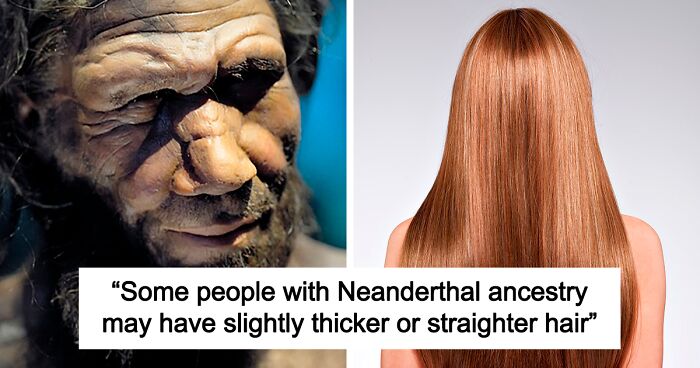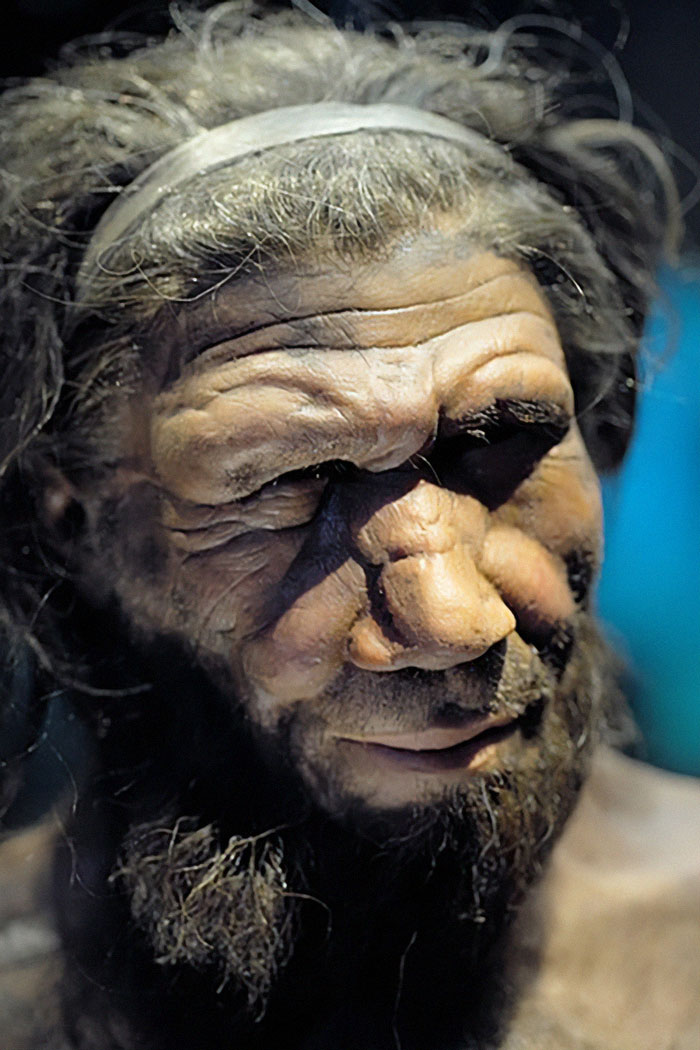
6 Traits That Indicate That You May Have Neanderthal DNA, According To Genetic Engineer
Neanderthals aren’t the stupid, primitive, and unsophisticated beings some of us might think, as evidence provided by their DNA has suggested.
In fact, evidence has also found that the closest ancient human relatives were just as capable as Homo Sapiens — the species we belong to now.
As it turns out, there has been interbreeding between Homo sapiens and Neanderthals at some point in time, leaving some of us with Neanderthal DNA up to this day.
In fact, there are ways to trace Neanderthal DNA in our bodies. Nevertheless, these traces could also be from other descendants, indicating a connection to our prehistoric cousins, Unilad reported.
Interbreeding between Homo sapiens and Neanderthals left some of us with Neanderthal DNA up to this day
Image credits: Werner Ustorf
The first indicator that might lead to Neanderthal DNA detected in our body is an increased likelihood of nicotine dependency.
Genetic engineer Sebnem Unluisler told the DailyMail: “Studies suggest a link between Neanderthal DNA and nicotine addiction risk.
“Individuals with Neanderthal ancestry may have a slightly increased likelihood of nicotine dependence.”
1. Smoking
Image credits: Koa’link
The quality and type of hair is an additional indicator. Thicker or straighter hair, as well as red hair, are signs that you might have Neanderthal DNA.
Sebnem said: “Neanderthal DNA has been linked to variations in hair characteristics. Some people with Neanderthal ancestry might have slightly thicker or straighter hair.
“Studies have also shown a higher frequency of a genetic variant associated with red hair was present in Neanderthals.”
2. Hair type
Image credits: Freepik
Moreover, your sleep pattern is another sign, with research suggesting: “Neanderthal DNA may influence circadian rhythms and sleep patterns.
“This may have been influenced by epigenetic factors, such as climate, social dynamics, and light exposure.
“People with Neanderthal ancestry may experience variations in their sleep-wake cycles.”
3. Sleeping pattern
Image credits: Freepik
Additionally, having a large nose could be another sign that you have some sort of Neanderthal connection, according to a study from University College London.
Such physical features may have helped breathing in a colder climate.
4. Nose size
Image credits: Braydon Anderson
Another indicator is that you may have been particularly badly affected by Covid-19, as people known to have Neanderthal ancestry tended to experience worse symptoms, Unilad reported.
5. Covid-19 reaction
Image credits: cottonbro studio
The last indicator is that you may also struggle to get a tan, with a study from Unsluisler explaining: “Individuals with Neanderthal ancestry might tend towards lighter or darker skin tones, with some having alleles associated with lighter skin tones that may have provided increased resistance to UV light in regions with lower sunlight intensity.”
6. Can’t tan
Image credits: Angela Roma
A lot of mystery surrounds the extinction of Neanderthals, with hypotheses including violence, transmission of diseases from modern humans to which Neanderthals had no immunity, competitive replacement, extinction by interbreeding with early modern human populations, natural catastrophes, climate change, and inbreeding depression.
“Now I know my ancestry,” a reader quipped
37Kviews
Share on FacebookExplore more of these tags
Well, this is a pretty poorly researched article, relying on two known unreliable sources (Unilad and Daily Mail) plus testimony from a researcher Sebnem Unluisler, whose articles listed entirely deal with tumor growth, not paleoanthropology. I am an anthropologist. Some of this is correct in terms of cranial morphology. The rest is either a complete misinterpretation of the facts or hypotheses stated in actual studies (which have been watered down by a journalist and then another journalist for clickbait. Hair and skin are implicated, but NOT confirmed to the extent this article implies. It has to do with keratin production (a protein found in skin and hair that thickens those tissues, hence stronger hair and less tanning). I have no idea where they got smoking from, I don't see it in any of the Science or related, reputable journals that published on these studies. All in all, I hope whoever wrote this did not go to journalism school. This is the worst science reporting of all time
The formatting sucks too. The numbered text doesn't match with what's under it.
Load More Replies...I wish the explanation of each trait was UNDER the number not above it. I was reading the first one about smoking under the picture and it was talking about hair. Title, Picture, Explanation. That's what the order I think works best.
Well, this is a pretty poorly researched article, relying on two known unreliable sources (Unilad and Daily Mail) plus testimony from a researcher Sebnem Unluisler, whose articles listed entirely deal with tumor growth, not paleoanthropology. I am an anthropologist. Some of this is correct in terms of cranial morphology. The rest is either a complete misinterpretation of the facts or hypotheses stated in actual studies (which have been watered down by a journalist and then another journalist for clickbait. Hair and skin are implicated, but NOT confirmed to the extent this article implies. It has to do with keratin production (a protein found in skin and hair that thickens those tissues, hence stronger hair and less tanning). I have no idea where they got smoking from, I don't see it in any of the Science or related, reputable journals that published on these studies. All in all, I hope whoever wrote this did not go to journalism school. This is the worst science reporting of all time
The formatting sucks too. The numbered text doesn't match with what's under it.
Load More Replies...I wish the explanation of each trait was UNDER the number not above it. I was reading the first one about smoking under the picture and it was talking about hair. Title, Picture, Explanation. That's what the order I think works best.

 Dark Mode
Dark Mode 

 No fees, cancel anytime
No fees, cancel anytime 




































































15
18